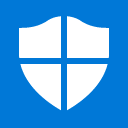New
#1
This password-stealing malware just added a new way to infect your PC
-
-
New #2
This sensationalist thread omits to mention the very clear information in the link that "Distributed in spam email phishing campaigns ... Like many malware campaigns, the initial attack is conducted via a malicious Microsoft Word attachment which tricks users into allowing macros"
There are well-established & wide-spread preventative measures to counter such attempts.
Denis
-
New #3
Yep. The best protection is good security habits by end user. Keep your systems updated and never rely on anything too good to be true. I guess this will get patched soon...
-
New #4
True....
On the other hand, the email with the MS Word attachment may come from your clients, or business associates, etc., who had been infected initially with this malware. You may even be waiting for a document from your client and opening it is the first reaction.
This is more prevalent in the world of small to mid-size businesses, where security awareness training is minimal at best and non-existent at worse. The preventative measures do work for the known threats, but most of the times they are useless against new ones.
-
New #5
I'm sure the AV companies are scrambling to enable their scanners to recognize and counter this, and I'm confident they will succeed.
-
New #6
-
New #7
-
New #8
-

This password-stealing malware just added a new way to infect your PC
Last Updated: 05 Jul 2018 at 12:01
A powerful form of malware which can be used to distribute threats including Trojans, ransomware and malicious cryptocurrency mining software has been updated with a new technique which has rarely been seen in the wild.What intrigued researchers is how Smoke Loader is now using an injection technique which hadn't been used to distribute malware until just days ago. The code injection technique is known as PROPagate and was first described as a potential means of compromise late last year.
This technique abuses the SetWindowsSubclass function -- a process used to install or update subclass windows running on the system -- and can be used to modify the properties of windows running in the same session. This can be used to inject code and drop files while also hiding the fact it has happened, making it a useful, stealthy attack.
It's likely that the attackers have observed publicly available posts on PROPagate in order to recreate the technique for their own malicious ends.
Those behind this process have also added anti-analysis techniques to complicate forensics, runtime AV scanners, tracing, and debugging that any researchers may attempt to conduct on the malware.
While there's still plenty of Smoke Loader attacks which look to deliver additional malware to compromised systems, in some cases the malware is being equipped with its own plug-ins to go straight onto performing its own malicious tasks.
Each of these plugins are designed to steal sensitive information, specifically stored credentials or sensitive information transferred over a browser -- the likes of Firefox, Internet Explorer, Chrome, Opera, QQ Browser, Outlook, and Thunderbird can all be used to steal data.
The malware can even be injected into applications like TeamViewer, potentially putting the credentials of others on the same network as the infected machine at risk too.
Read more: This password-stealing malware just added a new way to infect your PC | ZDNet
Related Discussions


 Quote
Quote